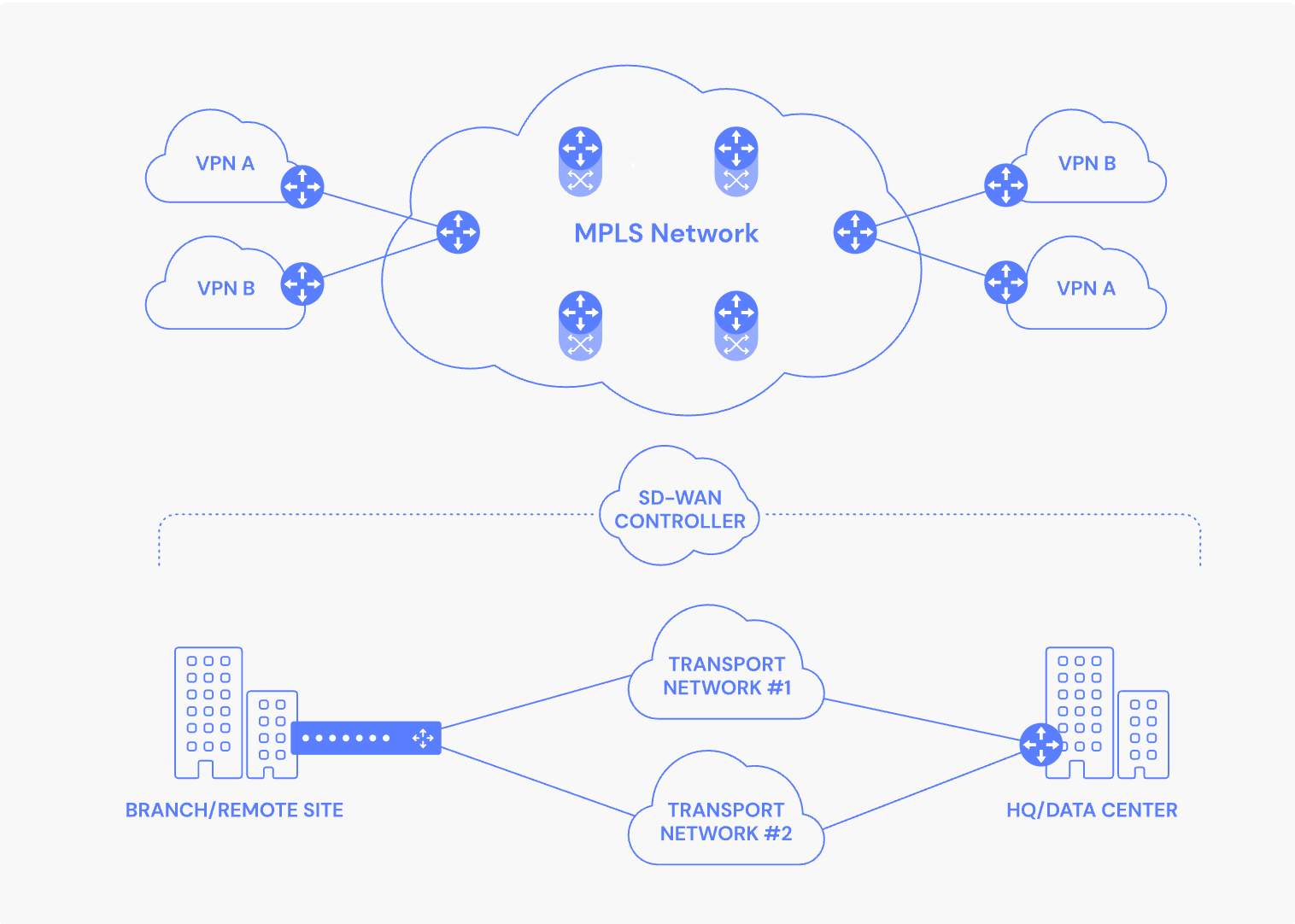SD-WAN vs. MPLS: Which One Makes Sense for a Growing Business?
If you're leading IT for a growing business, chances are you're evaluating your network infrastructure. Should you stick with MPLS or shift to SD-WAN? Understanding the differences can help you make an informed decision.
Understanding MPLS
MPLS (Multiprotocol Label Switching) has been the backbone of enterprise networks for years. It offers:
- Reliable Performance: Consistent latency and packet delivery.
- Quality of Service (QoS): Prioritizes critical applications.
- Security: Private lines reduce exposure to the public internet.
However, MPLS comes with challenges:
- Cost: High expenses for bandwidth and maintenance.
- Inflexibility: Difficult to scale quickly or adapt to new needs.
- Complexity: Managing multiple carriers and contracts can be cumbersome.
What Is SD-WAN?
SD-WAN (Software-Defined Wide Area Network) is a modern approach that uses software to manage network connections. Benefits include:
- Cost Savings: Utilizes broadband internet, reducing reliance on expensive MPLS circuits.
- Flexibility: Easily integrates new sites and cloud services.
- Centralized Management: Simplifies network monitoring and configuration.
- Improved Performance: Optimizes traffic routing based on real-time conditions.
Comparing SD-WAN and MPLS
When comparing SD-WAN and MPLS, the differences are clear across several key areas. MPLS has traditionally been a reliable choice but comes with higher costs and limited scalability, making it less ideal for modern, cloud-first businesses. On the other hand, SD-WAN offers a more flexible and cost-effective solution that aligns better with today’s connectivity needs.
Here’s how they stack up:
- Cost: MPLS is more expensive, while SD-WAN is generally more affordable.
- Scalability: MPLS offers limited scalability; SD-WAN scales easily with business growth.
- Deployment Speed: MPLS setups are slower to deploy; SD-WAN can be rolled out quickly.
- Cloud Integration: MPLS struggles with cloud integration; SD-WAN handles it seamlessly.
- Management: MPLS is managed in a decentralized way; SD-WAN offers centralized control.
- Security: MPLS operates on a private network; SD-WAN includes built-in security features.
For businesses embracing remote work and cloud services, SD-WAN is increasingly becoming the go-to choice.

Why Businesses Are Transitioning to SD-WAN
Many organizations are moving to SD-WAN to:
- Reduce Costs: Lower operational expenses by minimizing MPLS usage.
- Enhance Agility: Quickly adapt to changing business needs.
- Improve User Experience: Ensure consistent application performance.
- Simplify Management: Gain visibility and control over the entire network.
Is SD-WAN Right for You?
Consider SD-WAN if:
- You're expanding to new locations.
- Your team relies heavily on cloud applications.
- You're looking to optimize costs without sacrificing performance.
- You need a more agile and manageable network infrastructure.
Need Guidance?
Fiber IT Solutions can help assess your current network setup and determine if SD-WAN aligns with your business goals. Our experts will guide you through the transition, ensuring minimal disruption and maximum benefit.

Further Reading
- Is SD-WAN still relevant in today's technology landscape?
- https://www.networkworld.com/article/3622483/is-sd-wan-sill-relevant-in-todays-technology-landscape.html
- SD-WAN vs. MPLS - LinkedIn
- https://www.linkedin.com/pulse/sd-wan-vs-mpls-catchpoint
- What Is SD-WAN? — Software-Defined WAN - Zscaler
- https://www.zscaler.com/resources/security-terms-glossary/what-is-sd-wan
- The Network Admin's Guide to SD-WAN Benefits & Challenges
- https://www.catchpoint.com/network-admin-guide/sd-wan-benefits











